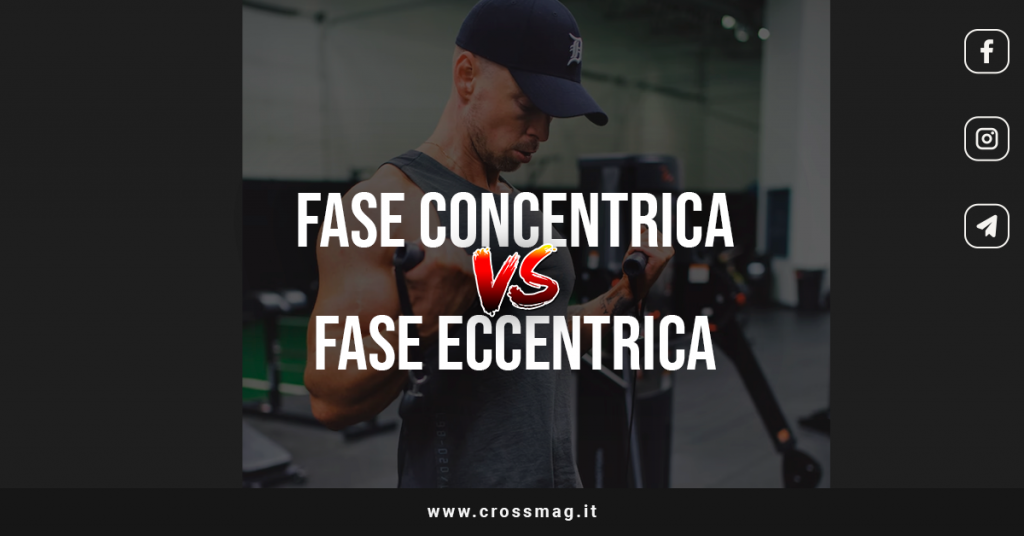When we make any movement, it consists of two parts: the concentric part and the eccentric part; while these two words may sound similar, they are two different things.
In this article we want delve into eccentric and concentric training and what they both mean to the athlete.
Index
Concentric VS eccentric: how are they different?
To give a correct and precise definition of these two terms, we need to introduce a third: isometric; isometric training is achieved when one muscle it engages without stretching or shortening.
Imagine running a air squat and to maintain the position in parallel; this position is a type of isometric exercise.
Concentric, on the other hand, means that the muscle contracts while resisting or force; for example, when we bring a dumbbell to the shoulder for a curl, it's a concentric movement.
The movement eccentric is basically the opposite; occurs when the muscle stretches again. Taking the example of the biceps curl, the eccentric movement occurs when we release the arm with the dumbbell towards the starting position.
Most exercises can be isometric, concentric or eccentric; if there is a concentric movement, necessarily there will also be an eccentric movement.
Is it better to focus on the eccentric phase or the concentric one?
Now that we understand the difference between these two movements, it might be natural to ask which one to focus more on; There are so many different approaches and there is no right or wrong answer.
Our advice is to perform all three movements with the same constancy and attention! This is because there are several studies showing that none of the movements have greater benefits than the other.
There are many variables involved, such as the choice of the exercise and its volume; the best choice is to find a balance between the various movements.
The movements concentric generate a lot of force and help us to move heavy objects; are the most common muscle contractions.
Le Eccentric contractions stretch muscle fibers under tension and decelerate the joint at the end of the movement; the movements Finally, isometrics do not cause movement of joints and generate force without the muscles lengthening or contracting.
Concentric and eccentric exercises
Let's see the specific exercises for the concentric phase and for the eccentric phase:
- Concentric phase: in exercise, concentric movements aim to make the muscles perform an action; the heavier the object you want to move or lift, the greater the force generated. Concentric movements are effective for building muscle mass, but you need to perform twice as many repetitions to get the same results as a workout that combines concentric and eccentric movement.
The most common concentric exercises and movements are:
- Lifting objects
- Bicep curls
- Post push-up extension
- Getting up from a squat
- Ham curls
- Sit up
- Eccentric phase: placing greater emphasis on the eccentric phase of the movement allows the muscle to remain tense for longer and activates growth impulses that guarantee rapid muscle development.
The most common eccentric movements are:
- To walk
- Lower a dumbbell
- Calf Exercises (calf raises)
- Squat
- Triceps extension.
And you, do you focus more on the eccentric phase or the concentric one? Let us know in the comments!
We have activated a lot of discounts on Amazon: from 30 to 70% on all sports categories! Find everything on our dedicated channel ????

